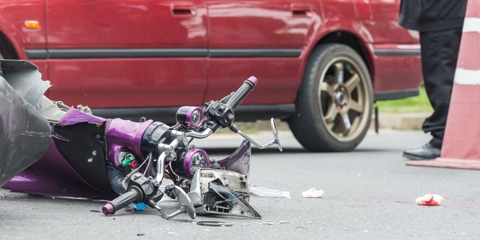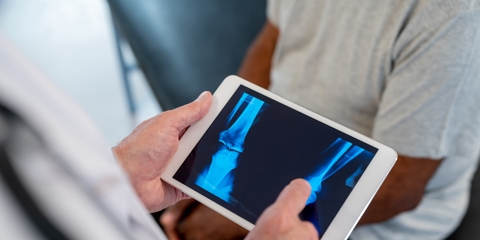Accident Reconstruction Techniques in Personal Injury Cases
Accident reconstruction experts play a pivotal role in the realm of personal injury claims. These professionals boast a specialized skill set, often with backgrounds in engineering or law enforcement, which equips them to dissect and interpret the chaotic aftermath of an accident. Their primary objective is to piece together a factual narrative of events, answering the critical question of 'how' an accident occurred. By meticulously analyzing the available evidence, these experts provide clarity that is instrumental in ascertaining liability and, ultimately, in the pursuit of justice for those affected by the incident.
The qualifications of these experts are as diverse as the accidents they investigate. Many hold advanced degrees in forensic engineering or possess certifications in accident reconstruction, ensuring they are well-versed in the latest methodologies. Their role extends beyond mere analysis; they are often called upon to testify in court, translating complex technical findings into comprehensible testimony. Their insights can be the linchpin in a personal injury case, swaying the outcome by shedding light on the dynamics of the crash, the actions of the involved parties, and the environmental factors at play.
Methods Used in Accident Reconstruction
Accident reconstruction is a multifaceted discipline that employs a variety of methods to unravel the intricacies of a collision. Skidmark analysis, for instance, can reveal vital information about a vehicle's speed and movements prior to impact. By examining the length and direction of skid marks, experts can infer braking patterns and the maneuvers attempted to avoid the collision. This traditional technique, while simple, can yield a wealth of data that is crucial in reconstructing the sequence of events leading up to an accident.
On the cutting edge of the field, computer simulations and the analysis of black box data, or event data recorders, have revolutionized the way accidents are reconstructed. These high-tech tools allow for precise modeling of crash dynamics, offering a digital recreation of the incident. The simulations can test various scenarios, providing a visual representation that is invaluable in court. Similarly, black box data can offer an objective account of a vehicle's actions—such as speed, steering input, and brake application—moments before a collision, providing an unassailable foundation for expert conclusions.
Evidence Gathering and Analysis
The collection of physical evidence from the accident scene is a meticulous process that demands prompt and precise action. Debris patterns, vehicle resting positions, and the condition of the roadway itself can all tell a story. Experts meticulously document these elements, understanding that each piece of shattered glass or tire tread mark can be a critical piece of the puzzle. The damage sustained by the vehicles involved is also scrutinized, as it can indicate points of impact and the forces exerted during the collision. This tangible evidence forms the backbone of the reconstruction effort, providing a tangible link between theoretical reconstructions and the reality of the crash.
Environmental conditions are equally telling. Factors such as lighting, weather, and road surface conditions can greatly influence the occurrence and outcome of an accident. Investigators assess these aspects to determine their potential contribution to the incident. For instance, poor visibility or a slick road surface can be pivotal in understanding the challenges faced by the drivers involved. This comprehensive approach ensures that all variables are considered, allowing for a reconstruction that is as accurate and encompassing as possible.
Utilization of Photographic and Video Evidence
Photographs and videos captured at the scene of an accident are invaluable assets in the reconstruction process. These visual records freeze the immediate aftermath of a collision, offering a candid glimpse that is immune to the fallibility of human memory. Experts analyze this evidence to corroborate physical findings, validate witness statements, and establish a visual context for the accident. The positioning of vehicles, the distribution of debris, and even the expressions of those involved can all be gleaned from these snapshots in time. In today's digital age, the prevalence of surveillance cameras and smartphones has greatly increased the availability of such evidence, enhancing the accuracy of reconstructions.
Video evidence, in particular, can be a game-changer. Whether sourced from traffic cameras, dashcams, or bystander footage, videos provide a dynamic record of the incident, capturing the motion and interaction of vehicles and pedestrians in real time. The frame-by-frame analysis allows experts to dissect these moments, often revealing critical details that static evidence cannot. The power of video lies in its ability to narrate the accident as it unfolds, providing a level of detail that is unmatched by other forms of evidence.
Impact of Reconstruction Findings on Liability Determination
The findings of an accident reconstruction can be instrumental in determining fault in personal injury cases. By establishing the mechanics of the accident, experts can identify contributing factors and actions that may have led to the incident. This objective analysis is crucial in piecing together the events that transpired, often highlighting instances of negligence or error. For instance, if the reconstruction reveals that a driver had ample time to react to a hazard but failed to do so, this could indicate a lapse in attention or recklessness, thereby attributing fault.
Moreover, the reconstruction results can clarify the extent to which each party is responsible for the accident. In cases where liability is shared, a detailed reconstruction can quantify the actions of each individual, providing a basis for comparative fault assessments. This nuanced understanding of the crash dynamics is essential for personal injury attorneys, as it informs their legal strategy and bolsters their client's position, whether in negotiations or in the courtroom.
Admissibility of Reconstruction Reports in Court
While the insights provided by accident reconstruction reports are invaluable, their admissibility in court is contingent upon meeting certain criteria. The foundation of these criteria is the report's accuracy and the expert's credibility. Courts often rely on the Daubert standard, which assesses the methodology used in generating the report, the expert's qualifications, and the peer-reviewed nature of the techniques employed. A report that is thorough and based on scientifically sound principles stands a better chance of being deemed admissible and can be a powerful tool in a personal injury lawsuit.
It is imperative for personal injury attorneys to ensure that the reconstruction reports they present are not only methodologically sound but also clearly communicated. A report that is overly technical or convoluted may fail to resonate with a jury. Therefore, experts must strike a balance between scientific rigor and accessibility, crafting reports that are both persuasive and understandable. When this balance is achieved, reconstruction reports can significantly influence the outcome of a case, providing the court with a reliable narrative of the accident.
The Intersection of Technology and Accident Reconstruction
The landscape of accident reconstruction is continually being reshaped by technological advancements, particularly in the realm of software development. Modern reconstruction software offers a level of precision and detail that was once unattainable, enabling experts to create sophisticated models of accidents. These tools can simulate vehicle dynamics, human reactions, and environmental conditions, providing a comprehensive view of potential scenarios. For legal professionals, leveraging these advancements means they can present stronger, more convincing cases backed by the latest in forensic technology.
These software platforms are not static; they evolve to incorporate new data and methodologies, reflecting the ongoing progress in the field. This constant innovation ensures that accident reconstruction remains at the forefront of forensic science, offering ever-more accurate depictions of events. The ability to visualize complex collisions in three dimensions, for example, allows juries and judges to grasp the intricacies of an accident in a way that words alone cannot convey. As such, the role of advanced reconstruction software in personal injury claims cannot be overstated.
The Emergence of Drones in Accident Scene Analysis
The use of drones has introduced a new perspective in the analysis of accident scenes. These unmanned aerial vehicles can capture high-resolution images and videos from vantage points that were previously inaccessible. For accident reconstruction experts, drones offer a bird's-eye view of the scene, allowing for accurate mapping and documentation. This aerial data can be particularly useful in reconstructing large-scale incidents, such as multi-vehicle pile-ups or accidents spanning extensive areas. The imagery captured by drones not only aids in the reconstruction process but can also be compelling evidence in court, providing jurors with a clear, unobstructed view of the accident's scope and impact.
The versatility of drones is especially beneficial. They can navigate these diverse environments with ease, ensuring that no detail is overlooked. As drone technology continues to advance, its integration into accident reconstruction promises to further enhance the accuracy and efficiency of investigations. The emergence of drones is a testament to the field's ongoing commitment to innovation, ensuring that personal injury claims are supported by the most complete and precise information available.
Legal Implications and Challenges in Personal Injury Claims
Presenting technical evidence, such as accident reconstruction reports, to a jury poses unique challenges. The complexity of the data and the specialized knowledge required to interpret it can be daunting for those without a background in the field. Personal injury attorneys must therefore be adept at translating this technical evidence into a narrative that is both compelling and comprehensible. They must bridge the gap between the expert's analysis and the jury's understanding, ensuring that the significance of the evidence is fully appreciated without oversimplifying the science behind it.
It is a delicate balance to maintain: too much technical jargon can alienate the jury, while oversimplification can undermine the evidence's credibility. Lawyers often rely on visual aids, analogies, and expert testimony to convey the essence of the reconstruction findings. The goal is to make the jury not just understand but also believe the evidence, and this requires a strategic presentation that is as much about storytelling as it is about science. The ability to effectively navigate these challenges can make a substantial difference in the outcome of a personal injury claim.
The Role of Reconstruction in Settlement Negotiations
Accident reconstruction reports can play a pivotal role in settlement negotiations in personal injury cases. A well-documented and detailed reconstruction can serve as a strong bargaining chip, providing clear evidence of fault and the extent of damages. When the opposing party is faced with compelling reconstruction findings, the likelihood of reaching a fair settlement can increase.
Conversely, the absence of a solid reconstruction can weaken a claim, leaving room for dispute and prolonging the negotiation process. It is in these instances that the expertise of a seasoned personal injury attorney becomes invaluable. They can leverage the reconstruction to highlight the risks of going to trial, encouraging all parties to consider the potential outcomes and the benefits of settling. Ultimately, the role of accident reconstruction in settlement negotiations is to provide a clear and objective basis for the claim, facilitating a resolution that is just and expedient for the injured party.
Burnetti, P.A. Is Here If You Have Been in an Accident
If you or a loved one has been involved in an accident and are in need of expert legal guidance, Burnetti, P.A. is here to help. Our team of experienced personal injury attorneys understands the complexities of accident reconstruction and will work tirelessly to ensure that your case is supported by the strongest possible evidence. We are committed to securing the compensation you deserve.
Contact us online or call Burnetti, P.A. at (888) 444-8508 to learn more about how we can assist you in navigating the aftermath of an accident and fighting for your rights.



.jpg)